No Foolin': 7 Things the Pentagon Is Buying With Your $1.5 Trillion
A day before April Fool's Day, a government watch dog released its most recent assessment of how the Defense Department is spending an eye-popping $1.5 trillion - that's 11 zeros - on major weapons systems.
While the multi-year, total cost of the programs is staggering - $1.5 trillion is the total GDP of Australia - the report from the Government Accountability Office noted that the major defense project profile for 2013 was down $200 billion from 2010 and is at its lowest point in almost the last decade.
The Pentagon has also gotten better about reducing cost in its acquisition process, the report said, although many projects still suffer from delays and stumble well over budget. Pentagon weapons buyers also still "accept risk" by putting programs into production before they have fully been tested.
In past years, a prime example of both dangers is the F-35 Joint Strike Fighter, the most expensive weapons system in history. The plan to buy the fighter plane - what the Air Force said would become the "backbone" of American air dominance - was so poorly conceived it amounted to " acquisition malpractice" as the Pentagon's top acquisitions official said in 2012.
But for a program marred by troubling report after troubling report of production delays and skyrocketing costs, according to the GAO, this year the Pentagon actually saved money with the F-35 - some $11.5 billion saved by the discovery of "efficiencies" in the program. Now it will only cost taxpayers some $332 billion.
Along with the F-35, check out the estimated price tags for the six most expensive of the Pentagon's 80 most major programs below and find more information on the figures from the GAO here. (To be clear, the GAO report and the information below deals with the Pentagon's multi-year "major defense acquisition program portfolio," which includes money that has not yet been allocated, and not its yearly budget. For its total defense budget this year, the Pentagon requested $526.6 billion.)

F-35 Joint Strike Fighter: $332 Billion
The F-35 Joint Strike Fighter, developed by defense contracting giant Lockheed Martin, is the most expensive weapons program on the planet at a current total acquisition cost of $332 billion - that's not including operational costs that are expected to push the price tag well over $1 trillion over the next 50 years.
But the GAO points out that the $332 billion is actually $11.5 billion less than last year's estimates, "due solely to efficiencies found within the program as no decrease in quantities was reported." Still, $332 billion is over $100 billion more than the program was expected to cost when estimates were made back in 2001.
The program is expected to deliver nearly 2,500 fighter planes to the U.S. military, split into three variations - one for the Air Force, one for the Navy and one for the Marine Corps. The plane is also part of a large foreign procurement project and will be sold to a number of allied nations.
The F-35 program has been plagued with delays, which have forced the military to revise the dates for which they expect to receive the fighters - the earliest being the Marine Corps version next summer, should everything go according to plan. And yet, problems persist:
"Four critical technologies are not mature and the program continues to experience design changes," the GAO report said. "Developmental testing is progressing but is far from complete and will likely drive more changes in design and manufacturing processes… Long-term affordability and sustainment costs remain challenging."
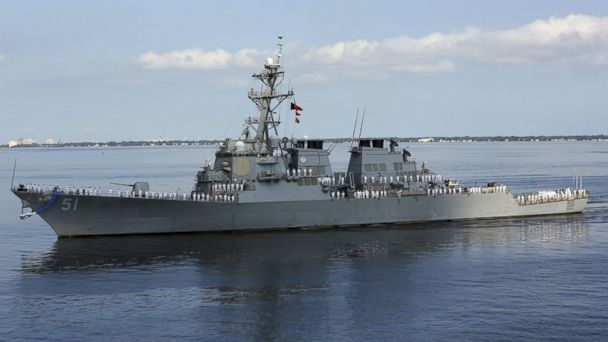
DDG 51 Arleigh Burke Class Destroyer: $107.8 Billion
The DDG 51 Arleigh Burke Class Destroyer program that has produced more than 60 guided-missile destroyer ships for the U.S. Navy, with more on the way, according to a previous GAO report. The most recent GAO report does not discuss the DDG 51 program in depth, but notes that its price increased $2.4 billion from last year, to a total of $107.8 billion.
The DDG 51 Arleigh Burke Class Destroyer is the "culmination" of technological advances on modern destroyers, according to the Navy, with a combat capability centered around the Aegis Weapon System.
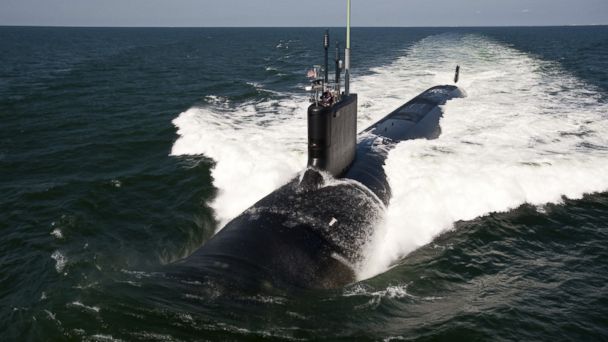
Stealth Virginia Class Submarine: $84.4 Billion
Slipping silent through the depths of the ocean for the Navy are a series of Virginia Class attack submarines, what the GAO said the Navy considers one of its "most well run programs."
According to the Navy, the stealthy subs are decked out with special features to support special operations personnel, high-tech "photonics masts" in the place of traditional periscopes and Vertical Launch Systems capable of blasting off Tomahawk cruise missiles. The Navy aimed to reduce costs with the most recent production block of the subs by redesigning "approximately 20 percent of the ship."
The GAO said the Virginia Class sub program shaved $2.3 billion off last year's total acquisition cost, which itself was $1.4 billion less than the year before that. Still, the program is the third most expensive for the Defense Department at $84.4 billion.
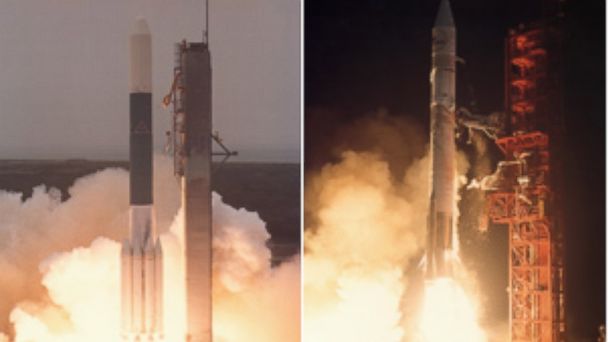
Evolved Expendable Launch Vehicle: $63.9 Billion
The Evolved Expendable Launch Vehicle (EELV) is how the U.S. government gets its satellites - military, spy, weather and otherwise - or whatever else it wants into space. The program consists of a "family" of launch vehicles produced by Lockheed Martin and Boeing under the joint venture United Launch Alliance. ULA lists among its customers the Pentagon, NASA, the National Reconnaissance Office and the U.S. Air Force.
NASA recently selected a ULA launch vehicle to shoot the space agency's "next-generation sun explorer" called Solar Orbiter into space. But as ULA keeps blasting off, so too does the amount of money the Defense Department is putting into the launch programs. As the fourth most expensive defense project, the EELV saw a marked increase in cost from last year - up $28.1 billion - to $63.9 billion.
"The program identified several causes for this cost growth including extension of program life-cycle from 2020 to 2030, procurement of 60 additional launch vehicles, the inherently unstable nature of the demand for launch services and industrial base instability," the GAO wrote.
In fact, over the life of the program - which began in the mid-90s - the GAO estimates that the cost of a single unit produced by the EELV has increased more than three-fold, from $100 million to $420 million each.

V-22 Osprey: $60.7 Billion
A longtime and controversial member of the list of most expensive Pentagon projects is the V-22 Osprey is a tiltrotor aircraft - meaning it can take off and land vertically like a helicopter, tilt its propellers forward and fly like a plane.
"The tiltrotor aircraft represents a major technological breakthrough in aviation that meets long standing military needs," the official website for the Osprey boasts.
Though recently employed by Air Force special operations forces, the aircraft has been long-used by the Marine Corps, even after it gained a reputation early on for being unsafe. The Osprey was the target of high-profile criticism for its perceived vulnerabilities, but the waves of criticism appear to have abated somewhat in recent years.
Now the Defense Department is showing no signs of curtailing production of the aircraft, paying an estimated $60.7 billion into the project, according to the GAO report.
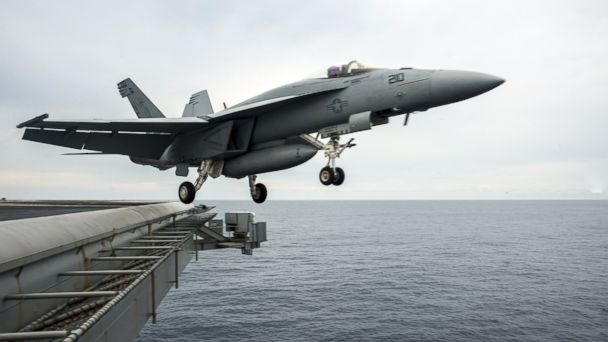
F/A-18E/F Super Hornet Fighter: $59.7 Billion
Coming in at number six for the most expensive Pentagon programs is an old stand-by, the F-18 Super Hornet jet fighter. The earliest variant of the Hornet was went operational way back in 1978 , with the "Super" Hornet E/F models discussed in the GAO report joining the Navy's arsenal in the early 2000s.
According to the GAO report, the Pentagon plans to spend $59.7 billion on F/A-18E/Fs, a program cost that had dropped $1 billion since last year. The Navy plans for the F-35 to "compliment" its F-18 fleet.
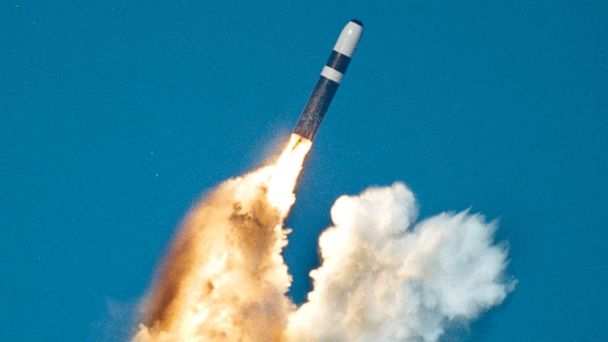
Trident II Missile: $55.5 Billion
The Trident II Missile is fired from American submarines and, according to a 2012 Pentagon report, "enhances U.S. strategic deterrence by providing a survivable sea-based system capable of engaging the full spectrum of potential targets."
Fired from Ohio class submarines, the missiles have an effect range of more than 4,600 miles, according to the Navy. In 2009, the Navy put the unit cost for a Trident II missile at $30.9 million and GAO estimates in its most recent report that the Pentagon will spend $55.5 billion on the program in all. Back in 2009, the Navy estimated that the missiles would continue to be used past 2020.